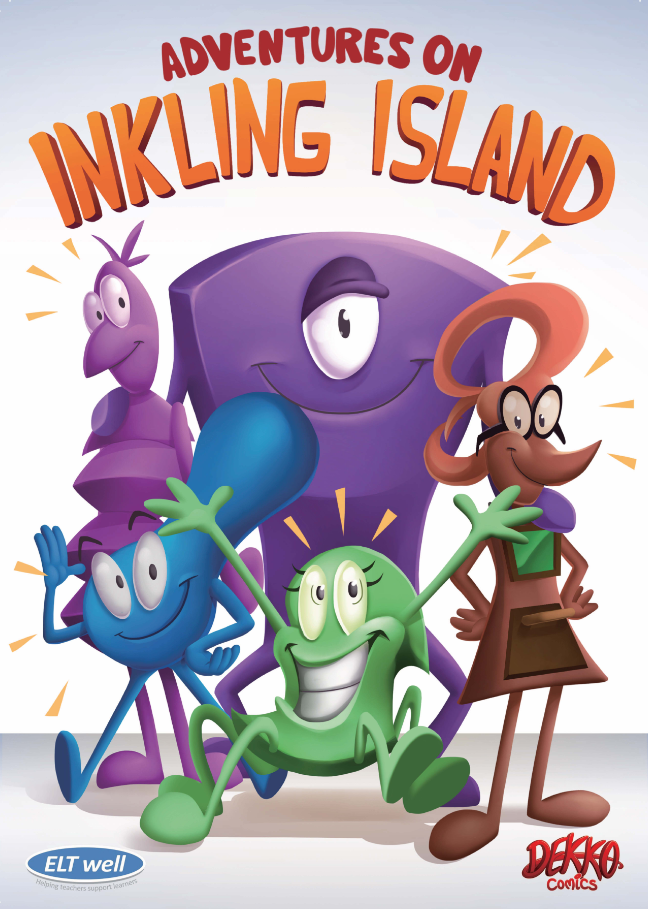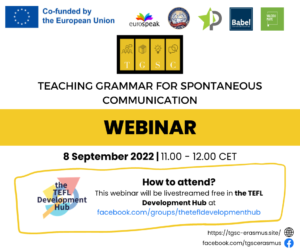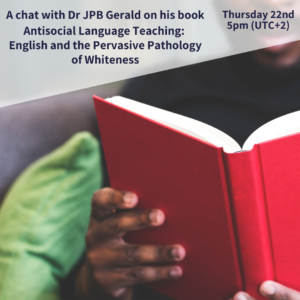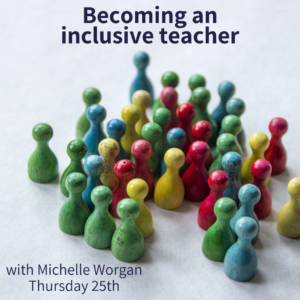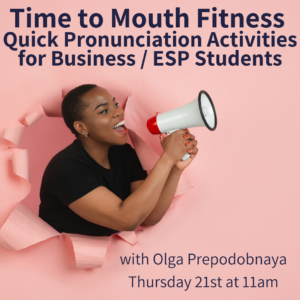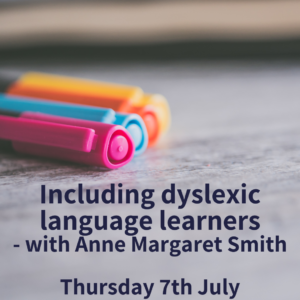Webinars
Antisocial Language Teaching: English and the Pervasive Pathology of Whiteness – with Dr JPB Gerald
Summary notes coming soon!
Tips for obtaining a PhD scholarship – with Cecilia Nobre
I made a bit of a mistake at the start, thinking that Cecilia was one of those ELT folks who had sprung onto the scene only recently…when in fact she’s been teaching for over 20 years. But I was completely having a fan-girl moment as I really respect Cecilia and her passion and dedication to the profession. She’s about to start a PhD in Applied Linguistics at Warwick (where she also did her Masters on a scholarship) and came along to share her tips for obtaining a scholarship, after being awarded three herself this year. She’s now using her experience to help other people looking to apply for scholarships and you can read more about her course here.
Applications for scholarship usually start in November / December for courses starting the following September and it’s a long process to go through! To start with, Cecilia proudly showed off her THREE (!) scholarship acceptance letters, but also said that she had received over 20 rejections in the past three years.
To apply for a PhD scholarship, you’ll need:
- a research proposal
- a personal statement
- your academic CV
- IELTS accreditation (if English isn’t your first language)
- 2 or 3 reference letters
Of these, the personal statement and research proposal would need to be tailored to the university you’re applying to. Bear in mind that the word counts for these documents might be different for each university too.
Cecilia then shared three mistakes that she had made in previous years. Firstly, she hadn’t realised how time-consuming it would be to prepare the research proposal and personal statement, both of which require numerous drafts, taking on feedback from critical friends. Secondly, she had underestimated the importance of connecting with potential supervisers as once you decide where to apply to, you need to look for a supervisor who will support your application. You can make connections by checking the university website and seeing their research interests and who might best be able to help you in your own research. Finally, she says she hadn’t appreciated the impact of methodology and contribution in the research proposal. She says it’s essential to identify how you’re going to carry out your research as well as the impact you feel your project will have on the community.
She went on to give some tips to help people prepare, such as starting at least three months ahead of the application deadline (though she said the more time you’re able to dedicate to it, the better). She also suggested reading recent papers in the area you’re likely to focus your own research to show you’re up-to-date with what’s happening in your field. She also recommended setting up a spreadsheet to keep track of what you’ve done: such as which universities you’re applying to and who you’ve contacted as potential supervisors and their responses, along with their contact details. She also said it’s worth contacting more than one person from each university to be your potential supervisor and to be aware of the busy periods for academics when they may be less able to respond.
Next, she gave some useful advice on how to find scholarships available. There are two websites she recommended, Find A PhD and jobs.ac.uk. You can also do a search with keywords – studentships, scholarships – along with your field. She also said there are some accounts on Twitter, such as @Scholarshipps, which regularly post details of funding.
As mentioned above, Cecilia has put her experience of applying for scholarships together and created a course, Pursuing PhD Scholarships, to help other people. The course is self-paced and aims to help people plan and structure their application more efficiently. It includes information on how to write the research proposal, personal statement and academic CV, as well as analysis of examples of these documents. There are videos with Cecilia and other academics who have successfully been awarded scholarships.
The course is divided into six modules, including one on preparing for the interview and live sessions each month. There’s also an online community to support one another for questions and accountability. She added that it’s a course she wishes she had been able to take when she started applying as unfortunately, when you are rejected, the university often won’t give personalised feedback as to why.
Are you interested in doing a PhD? What direction would your research take?
Time to Mouth Fitness – with Olga Prepodobnaya
I love a bit of phonology, so it was great to have another webinar on the topic. If you’re a fan of phonology too, you can also check out Lina Gordyshevkaya’s session on The Essentials of Teaching Pronunciation. Olga’s ideas are aimed at those in Business English, but easily adaptable to any context.
Olga noted that a lot of her learners shy away from pronunciation activities, imagining boring drilling activities. However, when they hear the word fitness, they feel more relaxed and so she decided to make the most of this and do mouth fitness with them. She talked about her teaching experience, often working with high-level businesspeople who may feel embarrassed by the idea of doing tongue twisters or other activities which may be seen as ‘silly’ if they can’t see the rationale behind them. She googled some more realistic tongue twisters than Peter Piper and discovered this one:
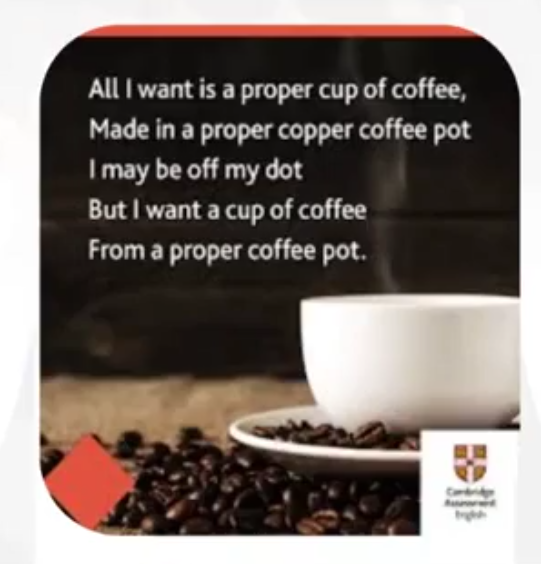
She identified some reasons why people might want to work on their pronunciation: to improve their motivation and boost their confidence and to increase their level of understanding of segmental and suprasegmental features of English. She went on to clarify what we mean by understanding: intelligibility, comprehensibility and interpretability (Smith, 1992), as well as Derwing and Munro‘s work on accentedness.
We also chatted a little about how learners can sometimes struggle to understand other learners speaking English if they come from a different L1 background.
Olga went on to look at some common words and phrases which can sometimes cause problems for her learners, such as the /w/ and /v/ in very well for Russian speakers or the number of syllables and stress pattern in vegetable or comfortable (although listen to one of The Hairy Bikers say vegetables). She also looked at some more business-specific language, such as expenditure or report.
An idea which Olga shared was how she adapted the SWOT analysis to work on her learners’ common pronunciation errors: (S) syllable added, (W) word stress and also /w/ and /v/, (O) the /əʊ/ problem and (T) the /tʃə/ problem. She also shared some tongue twisters she had prepared for her learners:
- /ks/: A successful dentist accepts credit cards except American Express.
- /w/ and /v/: When Valerio verifies vouchers in Verona, we will withdraw Venezuelan bolivars.
- /əʊ/: Coaches coach only coachable coachees.
- /tʃə/: Every culture has a different structure.
As she noted, quoting Underhill, pronunciation is about physicality so if we can our learners’ mouths used to producing different sounds, they will have better muscle memory through constant practice.
She also noted another problem which learners sometimes have distinguishing between Tuesday and Thursday (which reminded me of this clip from Friends). Olga’s adaptation was Tuesday (TWOsday) and Thursday (FOURsday), which though not entirely accurate, makes the distinction clearer, particularly if you’re trying to schedule lessons over the phone.
She ended with another adaptation of the SWOT model:
- S – see what they lack
- W – work on their ‘issues’ regularly
- O – optimize their routine by personalisation
- T – track their progress by recording
Do you have any of your own tongue twisters or other pronunciation hacks to add?
Including dyslexic language learners – with Anne Margaret Smith
Anne Margaret has kindly shared the slides from her presentation and you can also find more information and resources on her website, ELT well. I was really looking forward to this session because, as I mentioned at the start, I feel I have no experience of working with dyslexic language learners, though this could be because I haven’t had the tools to recognise them.
Anne Margaret said that this was probably a common situation for many ELT teachers as we often aren’t given specific training to recognise or work with SpLDs (specific learning differences).
She started the session by identifying five typical SpLDs: dyslexia, AD(H)D, dyspraxia, autism and dyscalculia. We discussed a little how it can be difficult to spot neurodivergence in second language learners, particularly if we don’t know our learners well. One issue that Anne Margaret highlighted is that dyslexia often becomes more obvious through literacy – which in English language learning often lags behind due to the challenges of orthography. She also noted that these SpLDs will be recurring and often have more than one manifestation, so we shouldn’t automatically assume that a fidgetty, restless student has AD(H)D.
She added that there is common ground between all these SpLDs – the yellow dot in the middle – which affects (working) memory, speed of processing, organisation and self-esteem, all leading our learners to have (extremely) good and bad days.
An important point to remember as well is that even if a learner has been identified as having a particular SpLD, they may also have traits of other undiagnosed SpLDs. Similarly, what it means for one learner to be dyslexic may be very different for what it is for another. We should approach each learner as an individual to identify what support they need in the classroom.
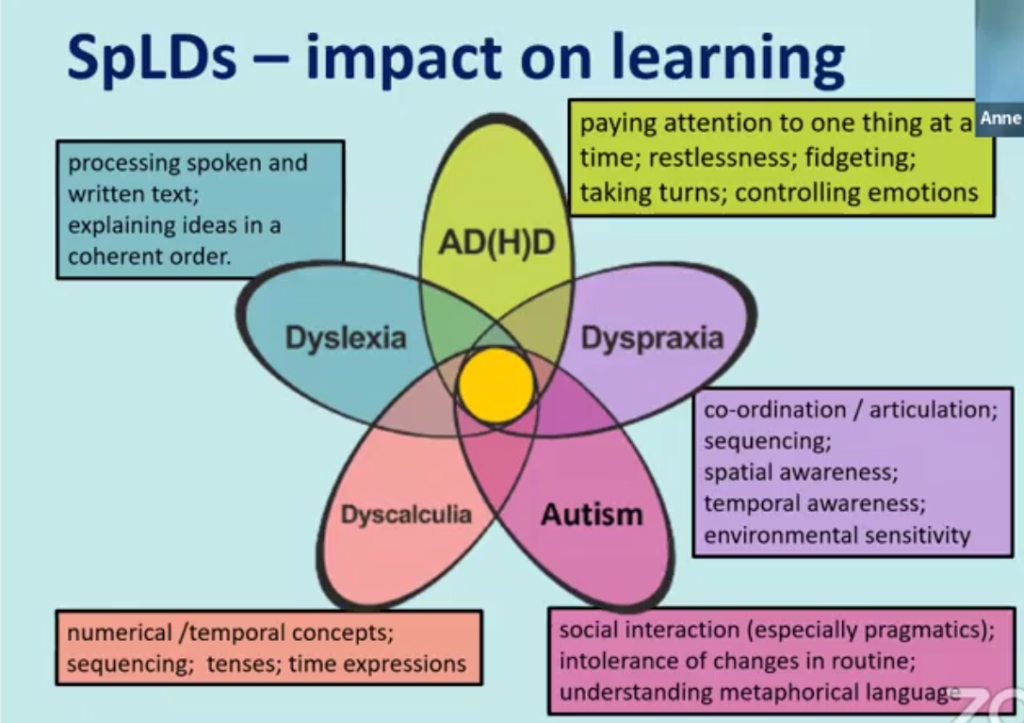
Anne Margaret went on to say that these aspects of crossover in the yellow dot are things we can work on with all learners. You can help learners develop tools to aid with memory and recollection and whilst you can’t increase a learner’s speed of processing, you can include simple hacks such as “answer at least five questions of ten” – allowing those learners who need more time to complete the minimum without needing to provide extra tasks for other learners. In terms of organisation, we can help our learners by using the tools they have available. For example, she joked that whilst learners may lose their homework, they never use their phones – so get them to set reminders on their phone or make notes on their phone. Sharing their own organisational strategies also helps to boost their self-esteem as it helps them to recognise what works well for them (their strengths) and also builds community in the classroom. She also suggests providing opportunities for learners to let you know if they’re having a good or bad day – building trust with your learners in this way will make them feel more comfortable coming to class.
Before moving on to talk about some other practical ideas, Anne Margaret mentioned some other typical SpLDs which can co-occur with those previously mentioned: DLD (developmental language disorder), prosopagnosia, OCD (obsessive compulsive disorder), Tourette’s syndrome and more.
"At the heart of inclusive practice in the classroom is the culture that it's OK to be you."
Anne Margaret identified three ingredients for learning:
- the classroom environment
- materials and tasks
- relationships
The classroom environment
There are a number of things we need to consider in the physical environment: temperature, lighting, noise levels, furniture / equipment and layout. With the classroom temperature, it might be something which you as the teacher have little control over as you may not be able to adjust the heating or open the windows. One suggestion she has is to recommend learners come in layers so they can easily adjust their own environment. With lighting, it might be worth having learners sit where they feel most comfortable if possible; with noise levels, it may be possible to allow learners to listen to their own music when working independently. You can also consider how close learners are to each other and whether some learners require more space and lead a discussion with the group on what would work best for them and alternatives which might be effective for the whole group.
Materials
There are things you can do to support learners for example having a clear layout, including multisensory activities, setting a realistic pace and considering the amount of content, and representing different lived experiences in your materials – on this topic, you may be interested in checking out the session from the Raise Up! team or Lottie Galpin’s talk on representing disability. For the clear layout, she also suggested making a simple ‘window’ with two L-shaped pieces of card which learners can place in their books or over materials to help them focus their attention on a particular activity. She also had a great idea for using Cuisenaire rods to help learners with questions and statements.
Tasks
Anne Margaret advised breaking tasks into small steps and adding in lots of moments to recap, review and revise. She also said that it’s essential to give explicit instruction and feedback (which is general good practice in ELT anyway!).
You can find more ideas in her books: Including Dyslexic Language Learners and Language Learning and Musical Activities. There’s another book edited by Anne Margaret, Activities for Inclusive Language Teaching.
Relationships
She highlighted the importance of respecting each other’s differences in the classroom and how key acceptance and belonging and in an inclusive classroom. This also helps you when considering pairings and groupings. We should also always look for the positive and praise learners authentically for what they do well.
Anne Margaret ended by sharing one of the characters from her comic, Adventures on Inkling Island, and talked about the impact that we can have on our learners and how they see themselves, bu projecting positivity onto them. She also highlighted the importance of sharing that positivity with other people, such as colleagues who may also teach that learners, or their family. She added a wonderful analogy, comparing teachers to the cold North Wind and the hot Sun from Aesop, saying that we should be the sun that shines upon our learners.
